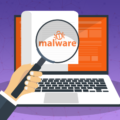One of the biggest threats to your organization’s IT comes in the form of social engineering attacks. Therefore, you need to keep your business protected.
In the digital age, there are many threats to your IT infrastructure. These can include ransomware, software vulnerabilities and malware. However, perhaps the most dangerous, and easiest to launch, attack involves social engineering. This attack relies on exploiting human psychology to gain a foothold within a targeted network. In many ways, it’s an age-old deception strategy from the physical world, but simply transferred over to the digital world. This article looks deep into the world of social engineering and should provide you with a better understanding of how to safeguard your business.
What is Social Engineering?
The main objective of social engineering, for a threat actor, is to convince individuals that divulging sensitive information or performing network actions is the right thing to do. Often, this strategy relies on phishing emails. These are emails which are sent to targets and claim to have been sent from someone they know e.g. a work colleague or a supplier. However, what the threat actor is trying to do here is either extract confidential information – such as login credentials – or encourage the target to click a malicious link.
Get Your Team to Recognize Social Engineering
Social engineering attacks will always be targeted at your employees, so this means that you need to invest in educating your employees. While an IT induction represents a good opportunity to warn them of the telltale signs of social engineering, the sheer range of social engineering strategies requires something more intensive. Accordingly, regular training courses which are followed up with refresher courses are highly recommended. Even better, sending randomised ‘spoof’ phishing emails internally can indicate which employees require tailored training.
Strengthen Your Authentication Processes
If you want to add an extra layer of defense to your IT infrastructure, strengthening your authentication processes is an excellent way of achieving this. Not only will this thwart social engineering campaigns, but it will also protect you against almost all other security threats. Therefore, make sure you focus on the following:
- Integrate password rules which require your employees to create complex passwords e.g. using a mixture of case types, numbers and symbols.
- Bring in multi-factor authentication to help protect your employees’ existing login credentials and place a further obstacle in the way of unauthorized access.
- Put a time limit on passwords and ensure that they have to be updated within a set time e.g. every two months.
Secure Your Communication Channels
Applications such as Microsoft Outlook and Teams have revolutionized the way that businesses communicate, but they also represent a rich source of data. With this in mind, you need to secure these communication channels against the threat of social engineering. Encrypting data flowing in and out of these applications is paramount to protect the type of data that social engineering is hungry for. So, use VPN’s where possible and make sure your employees avoid using their devices on public Wi-Fi.
For more ways to secure and optimize your business technology, contact your local IT professionals.









